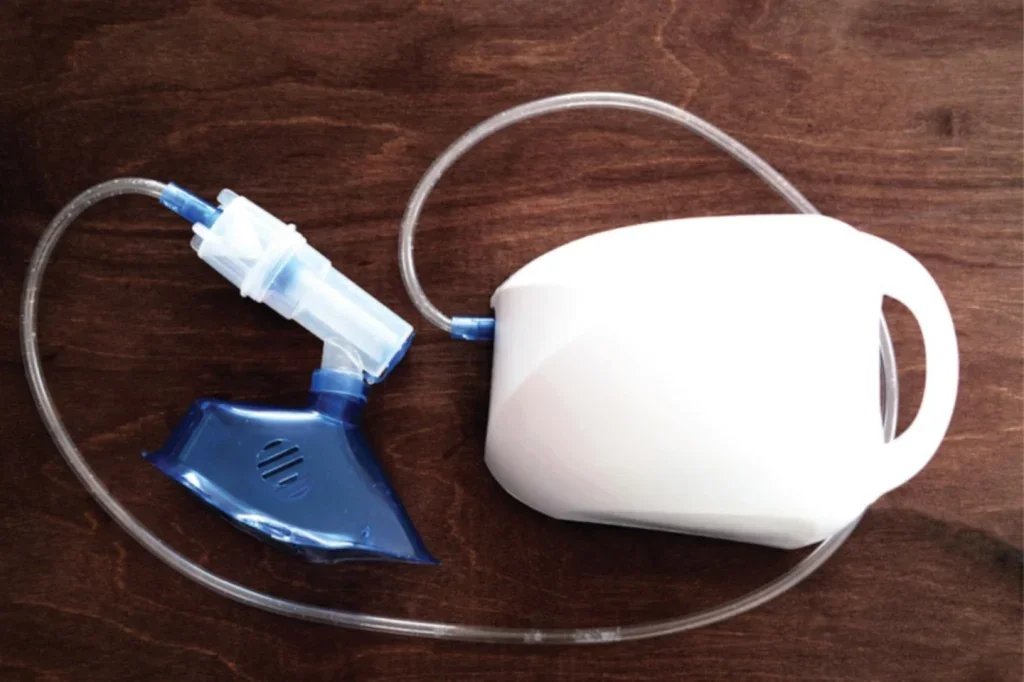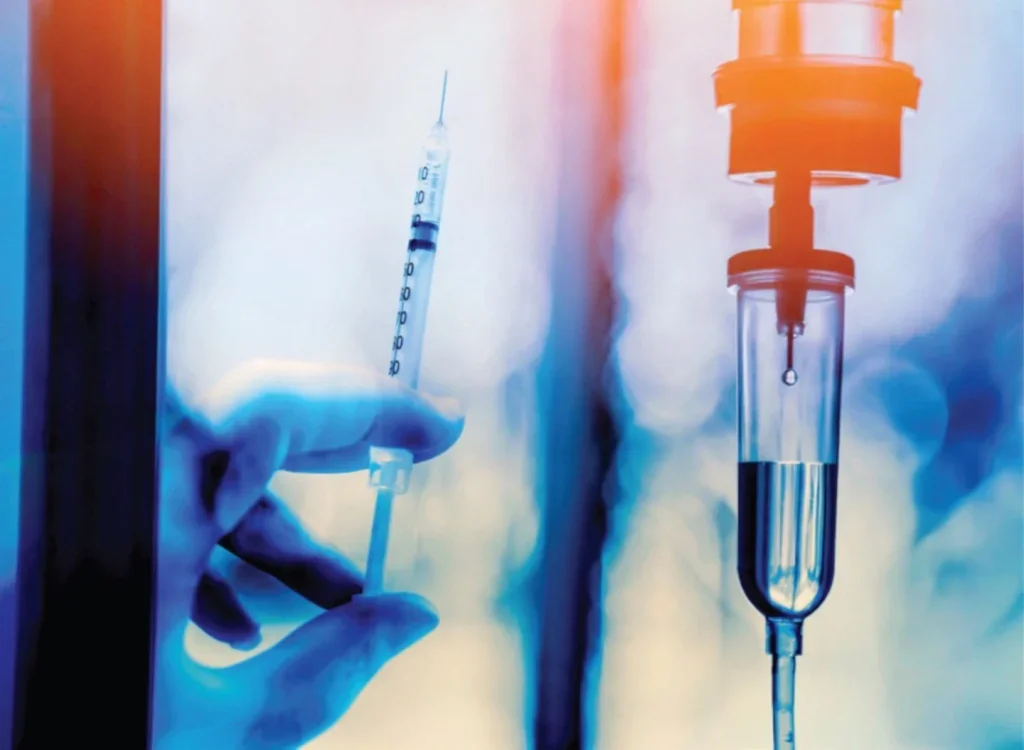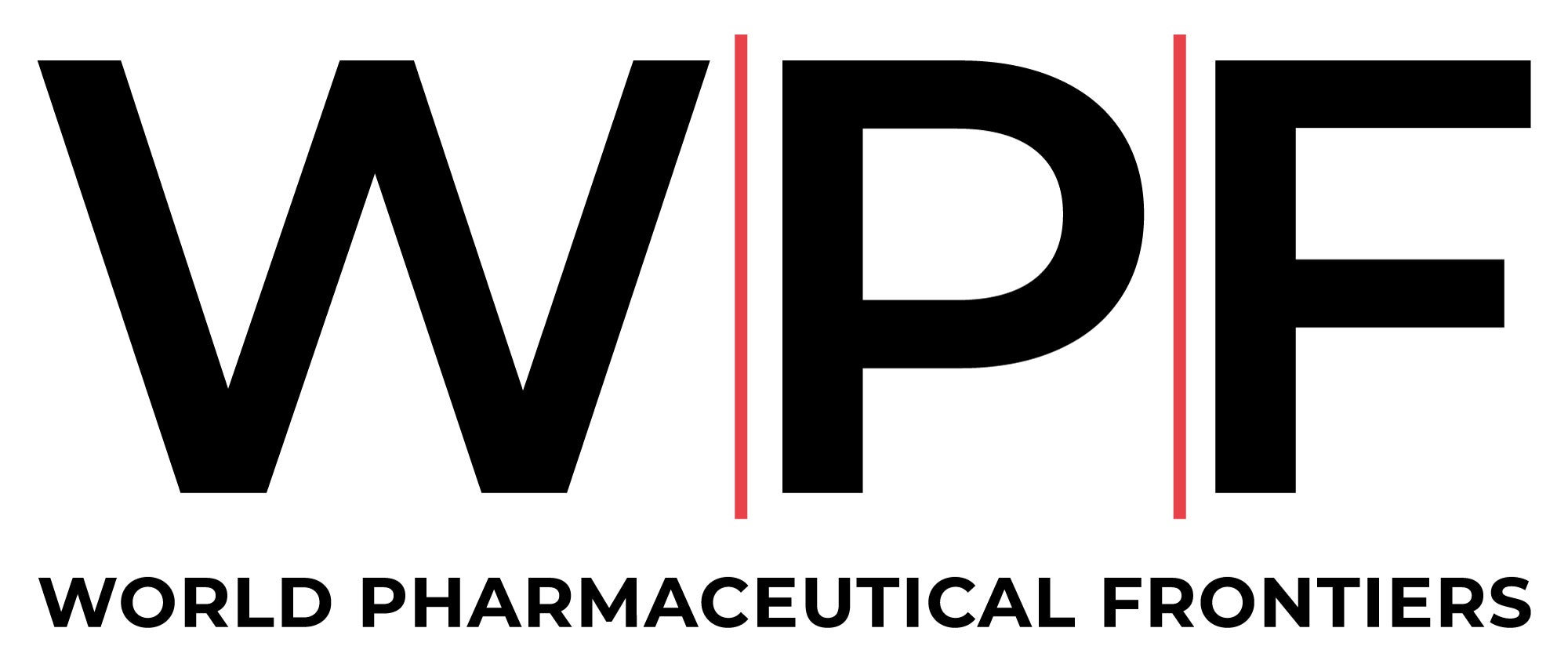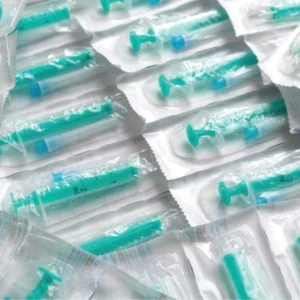
Drug-device combination products are a cornerstone of the pharmaceutical industry. Referring to any product that combines a drug with a medical device – think autoinjectors, nebulisers or infusion pumps – they are typically very effective and user-friendly. Crucially, the drug delivery mechanism is tailor-made for that medicine. And in many cases, patients can ensure they’re getting the appropriate dose, with no need to measure it out. It’s no wonder that sales are surging. Between 2023 and 2033, the global market for drug-device combination products is projected to double from $118bn in 2023 to $236bn, according to insightSLICE. This growth is being fuelled by a wave of medical innovation, with cutting-edge devices like smart inhalers and wearable patch systems becoming increasingly commonplace. The goal is to make life easier for the patient or clinician. However, that doesn’t mean it’s always smooth sailing for the manufacturer. Compared with standalone medical devices or pharmaceutical products, combination products can present unique regulatory challenges. And while many regulatory agencies have taken pains to ease the burden, the development and approval process can remain hard to navigate.
That’s because the different components are typically managed by different regulatory agencies (or, in the FDA’s case, different FDA centres). What’s more, as well as looking at the drug and the device in isolation, regulators need to pay attention to the way the two parts interact. It isn’t always clear how these products should be assessed, nor what standards the manufacturers should be striving to meet.
In June 2024, the FDA brought some long-awaited transparency into the discussion, with its draft guidance on Essential Drug Delivery Outputs (EDDOs) for devices intended to deliver drugs and biological products. The guidance, says the FDA, will apply to devices such as syringes, injectors, infusion products, nasal sprays, inhalers, nebulisers, and vaginal systems.
It doesn’t address all the information that manufacturers need to consider when applying for regulatory approval. For instance, it doesn’t look at factors like drug-device compatibility, biocompatibility, or (in the case of smart devices) cybersecurity. However, it does cover all the characteristics that allow the device to function as intended. As the FDA phrases it: “EDDOs are the design outputs necessary to ensure delivery of the intended drug dose to the intended delivery site.”
That might apply to a wide range of design features – anything that’s involved in preparing the drug and delivering it safely and effectively. For instance, ‘dose accuracy’ would be an EDDO for an autoinjector, whereas ‘packaging integrity’ would not. According to the FDA, other EDDOs for the syringe might include extended needle length, activation force, audible/visual feedback, and cap removal force. Importantly, all these aspects are dependent on the device design itself, rather than being controlled by the user. Under the guidance, manufacturers will be tasked with identifying what their EDDOs are and identifying an appropriate control strategy during the development process. They must also evaluate any changes to their product that are made during clinical development or post-market to make sure the EDDOs aren’t adversely affected.

Challenges and concerns
So, is this the burst of clarity the industry was hoping for? Bonnie Odom and Megan Robertson, attorneys at Epstein Becker & Green, see more work to do before the agency should consider issuing its final guidance. Their firm heads up the Combination Products Coalition (CPC) – a group of drug, device and biologics manufacturers who engage in various advocacy-related efforts to improve the regulatory environment for combination products in the US. They note that, while the industry has been anxiously awaiting guidance on this topic, the draft guidance is not without its areas of confusion. Despite being so foundational to the FDA’s new approach, EDDOs are not an established concept within the industry. As the FDA wrote in the draft guidance: “Prior to this guidance, the term essential performance requirements (EPR) was generally used in communication between FDA and applicants for the EDDOs described herein. FDA is now using the term EDDO as we believe it is more descriptive.”
As Odom and Robertson explain, the term EPR first appeared around 2017, when the industry reported receiving requests from FDA reviewers related to EPRs.
“These new requests were challenging to manage as there was no formal guidance from FDA defining the term EPRs or providing details around related expectations,” they say. “This created an ongoing lack of clarity and predictability around the application and interpretation of EPRs during the review process, in some cases, leading to delays. Accordingly, getting formal guidance on EPRs has been a top priority for industry for a number of years.”
Although ‘EPR’ and ‘EDDO’ are intended to mean the same thing, Odom and Robertson suggest the approach outlined in the draft guidance may not allow for the same level of flexibility that industry has had in managing EPRs. While there was never a uniform, industry-wide approach to EPRs – meaning a straightforward comparison isn’t possible – some features of the new guidance may pose headaches where there weren’t any before.
“There seems to be alignment among many in the industry that the draft guidance includes certain recommendations around EDDOs that are new, or more stringent, than what industry would have expected,” they say. For instance, manufacturers might be tasked with providing additional details when submitting clinical applications. And they may have to perform tasks that weren’t previously expected. As an example, the guidance states that design verification of EDDOs ‘generally includes preconditioning’. That’s a way of simulating the kind of stressors the product will be exposed to throughout its life cycle, and it can be a useful way of determining what the product can withstand. Helpful though it is, Odom and Robertson suspect it may not be appropriate across the board.

“Rather than being subject to a default expectation here, the industry would prefer to have the discretion to determine when, and for which EDDOs, preconditioning is appropriate,” they say.
On top of that, there are some question marks around whether EDDOs/EPRs are ‘inputs’ or ‘outputs’. (Design inputs are the starting point for product design, ensuring the design requirements address what the product is meant to do. Design outputs are the tangible results of the design inputs.) As Odom and Robertson point out, the clear framing of EDDOs as ‘outputs’ came as a surprise to many companies.
“Companies that have, to date, referenced EPRs as ‘inputs’ within their established quality management systems have raised concern that significant adjustments to these systems would be needed to accommodate the EDDO framework set forth in the draft guidance,” they say. “These adjustments could drive potential inconsistencies in company development processes across regions and add complexity to company compliance efforts more broadly.”
There have also been some surprises around how the FDA approached the subject of design validation. “Specifically, there is some industry concern that FDA’s current language conflates acceptance criteria for EDDOs with design validation of a finished combination product or device,” say Odom and Robertson.
The way forward
It’s no wonder that the industry’s response to the draft guidance has been mixed. In the months following its publication, the FDA solicited public comments. The level of stakeholder response was significant, with many asking the FDA for further clarification. The International Pharmaceutical Aerosol Consortium on Regulation & Science (IPACRS) wrote that the guidance does not provide enough definition of terminologies: “The terminology surrounding Design Inputs, EDDOs, Essential Performance Requirements, and Primary Functions should be clearly defined to ensure there are no discrepancies in application, and to provide clarity versus existing FDA requirements and definitions.”
The International Society for Pharmaceutical Engineering (ISPE) suggested changing the title of the document, to make it clear that it applies to future therapies like cell and gene therapies too. Meanwhile, the Parenteral Drug Association (PDA) suggested modifying the scope to exclude ‘standalone medical devices that are indicated for general delivery’.
The CPC, say Odom and Robertson, have commented on many specific parts of the guidance. But above all, they want the FDA to afford the industry greater flexibility in terms of how they implement the new measures.
“CPC also strongly suggested that FDA host or actively participate in public forums to further discuss and receive additional input from industry on key tenets of the draft guidance,” they say. “CPC believes this FDA-industry dialogue will be critical in informing FDA’s development of final, or revised draft, guidance.”
This kind of discussion would serve both parties well. Industry would be able to add further colour to comments submitted, while the FDA would be able to offer insight on the reasoning behind its approach.
In the meantime, while it is possible that concepts from the draft guidance could come up during product reviews, recommendations from FDA guidance (even final guidance) are technically not binding on FDA or industry. In any event, companies will be crossing their fingers for a revised document that deals with the concerns they’ve raised. The final document is expected to be released in 2026 or 2027 – although Odom and Robertson caution there might be delays.
“It’s unclear if this anticipated timing will hold given potentially shifting priorities under the new administration,” they say. “In addition, because this was one of the most ‘highly commented on’ FDA combination product-focused guidance documents, FDA will likely need time to carefully work through those written comments.”
In short, the industry could be facing continued uncertainty for some time to come. Not that manufacturers are deterred – innovation is progressing fast, and the FDA is receiving ever more submissions for drug device combination products. But it could be a while before we have the final word on what exactly the Agency is looking for.
“CPC’s ultimate hope is for the final guidance to provide for an approach to EDDOs that allows for more streamlined submission content and reviews without compromising industry flexibility in determining the best path to meet FDA’s expectations,” say Odom and Robertson.





